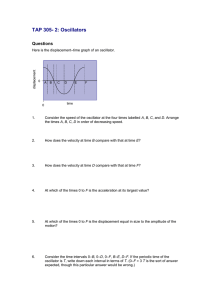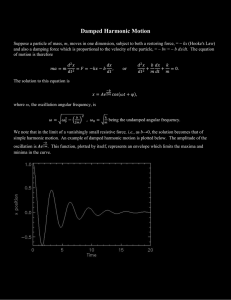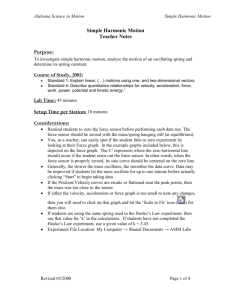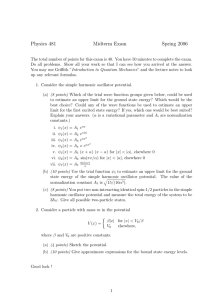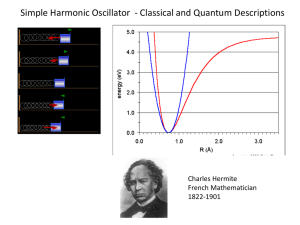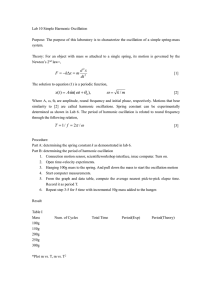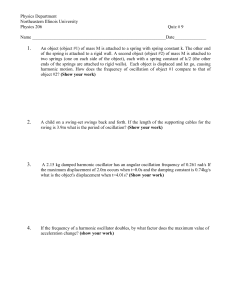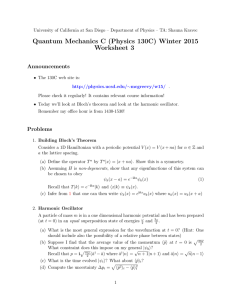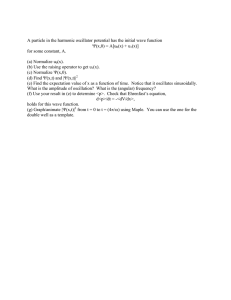Per 5: In Simple Harmonic Motion, as just described,
advertisement
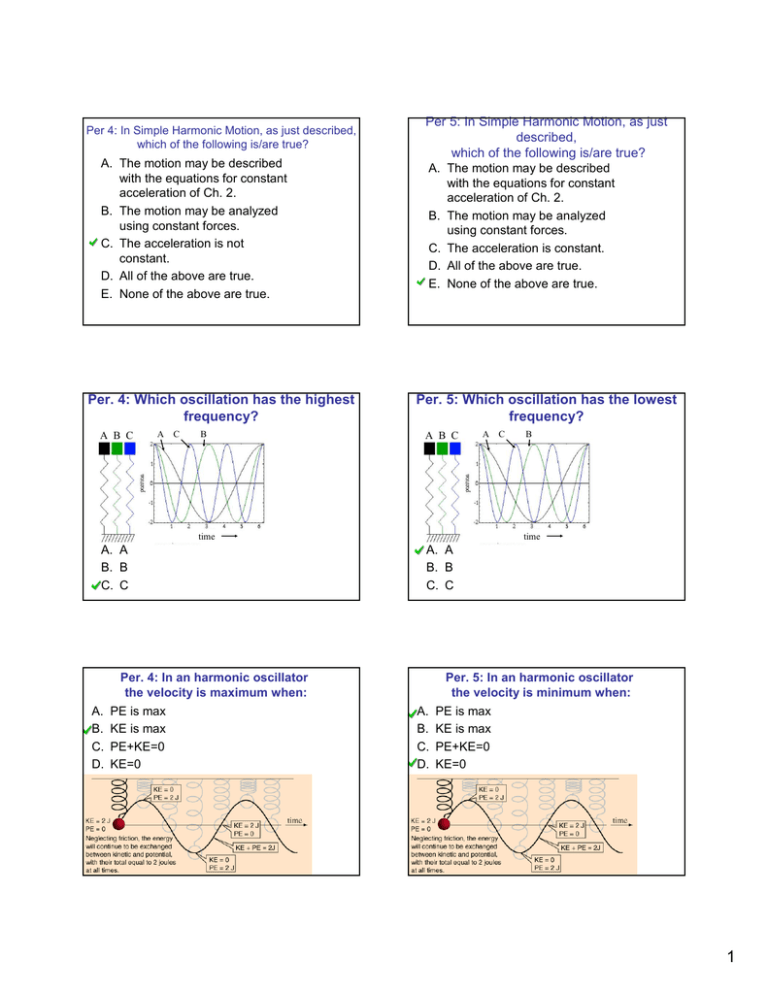
Per 4: In Simple Harmonic Motion, as just described, which of the following is/are true? A. The motion may be described with the equations for constant acceleration of Ch. 2. B. The motion may be analyzed using constant forces. C. The acceleration is not constant. D. All of the above are true. E. None of the above are true. Per. 4: Which oscillation has the highest frequency? A B C A C B Per 5: In Simple Harmonic Motion, as just described, which of the following is/are true? A. The motion may be described with the equations for constant acceleration of Ch. 2. B. The motion may be analyzed using constant forces. C. The acceleration is constant. D. All of the above are true. E. None of the above are true. Per. 5: Which oscillation has the lowest frequency? A B C A time A. A B. B C. C PE is max KE is max PE+KE=0 KE=0 B time A. A B. B C. C Per. 4: In an harmonic oscillator the velocity is maximum when: A. B. C. D. C Per. 5: In an harmonic oscillator the velocity is minimum when: A. B. C. D. PE is max KE is max PE+KE=0 KE=0 1

